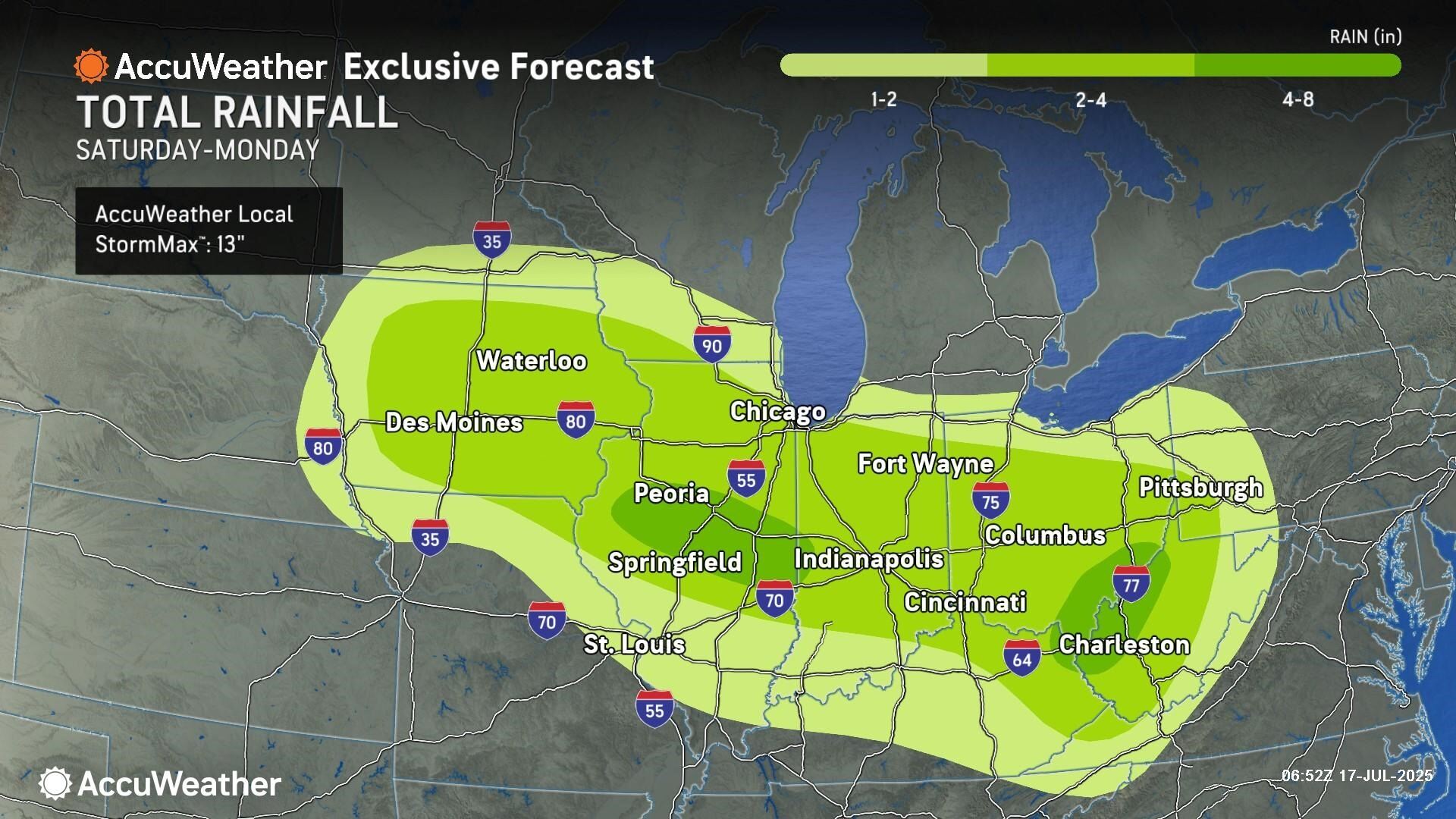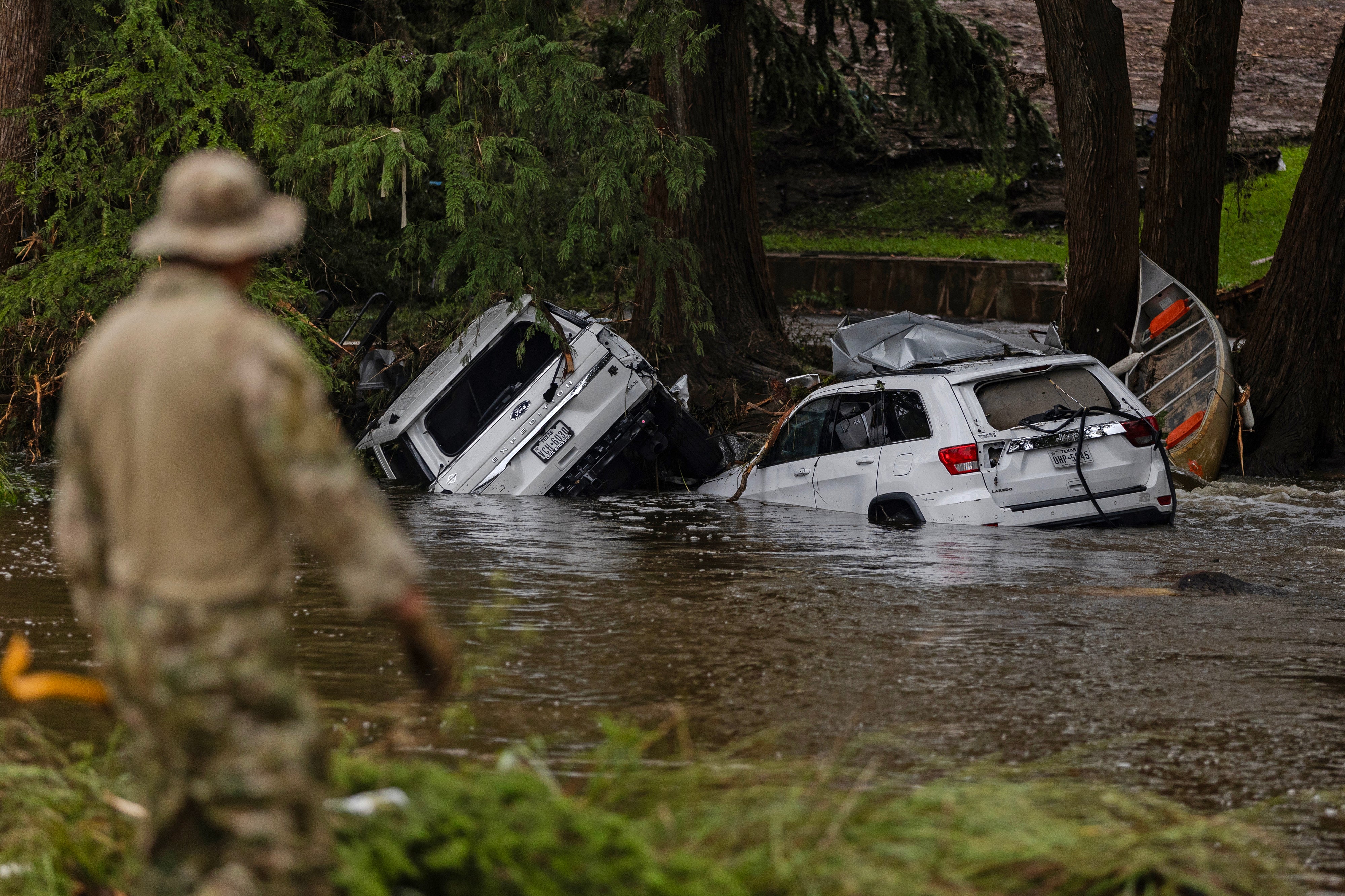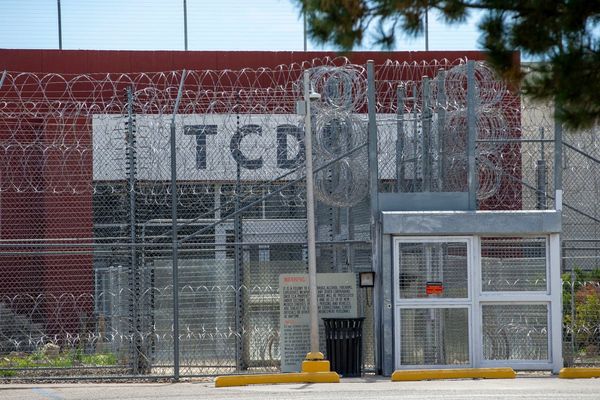More than 30 million Americans are under the threat of dangerous flash flooding through the weekend and into next week.
The forecast comes on the heels of heavy rain in Louisiana and Mississippi on Thursday, major and disruptive flooding that forced a state of emergency in New Jersey, and deadly flash floods in Texas that took the lives of at least 135 people, including children at a Christian girls’ camp.
“This tropical rainstorm is not expected to strengthen and get an official name, but it will soak the Gulf Coast. This major rainmaker could trigger dangerous flash flooding from Louisiana and Mississippi all the way to the Ohio Valley and Appalachians through the weekend,” AccuWeather Lead Hurricane Expert Alex DaSilva explained.
“Areas south and west of New Orleans could see four to eight inches of rainfall. We’re increasingly concerned about the risk of flooding through the weekend as the moisture from this tropical rainstorm surges northward,” he said.
Residents of 11 states across the Midwest, Ohio Valley, and Appalachians will see moisture from the same tropical rainstorm that brought flooding impacts to the Gulf Coast from Saturday through Monday.
AccuWeather meteorologists said two to four inches of rain is expected from Saturday through Monday from Iowa to the Appalachians, including in Chicago, Indianapolis, and Pittsburgh.
“The area of low pressure at center of tropical rainstorm is expected to dissipate Saturday over Arkansas or Missouri. However, the some of the remaining moisture-laden tropical air and atmospheric spin associated with the former rainstorm will be drawn farther north,” AccuWeather Vice President of Forecast Operations Dan DePodwin explained. “This can enhance the risk for heavy rainfall and flash flooding into early next week across the Midwest and Ohio Valley.”

Widespread flooding across the region is not expected, but pockets of significant flash flooding are possible from Iowa to the Appalachian mountains, with some areas seeing as many as 13 inches of rain.
“Don’t let your guard down on this threat for flash flooding. People across parts of Iowa and Illinois to the Ohio Valley and Appalachians need to be prepared for the risk of flash flooding. Some of these areas already have saturated ground after rounds of downpours and storms in recent weeks,” said Porter.
In areas where one to three inches of rain occur per hour, there may be additional rounds of life-threatening flash flooding into next week.
The danger comes as several states across the country are recovering from the impacts of flooding rainfall events. In Central Texas, the search continued for people who went missing in and around Kerr County and “Flash Flood Alley” earlier this month.

The flood moved quickly in the middle of the night, dumping 10 or more inches in a matter of hours, due to the remnants of Tropical Storm Barry lingering over the Lone Star State,
As the Earth’s atmosphere warms, it has the ability to hold more moisture and produce conditions ripe for flooding rainfall.
Human-caused climate change is increasing the frequency of 1,000-year flood events around the world, which have a 0.1 percent chance of occurring in any given year, according to the U.S. Geological Survey. Four happened in less than a week this month.
“This has been a tremendously impactful and dangerous year with flash flooding tragedies reported across the country,” Porter said. “The number of flash flood reports this year to date has been a staggering 70 percent above the 10-year historical average.”
Here’s how climate change is making floods more dangerous across the country
Here’s why record-high flash flood warnings were issued in U.S. this year
‘Car is being swept away’: Man’s last call to wife as South Korea hit by heavy rain and landslides
Here’s why record-high flash flood warnings were issued in U.S. this year
The three reasons why beef is so expensive in the U.S.
FBI told to flag Trump’s name in review of Epstein files, Democrat claims: Latest







